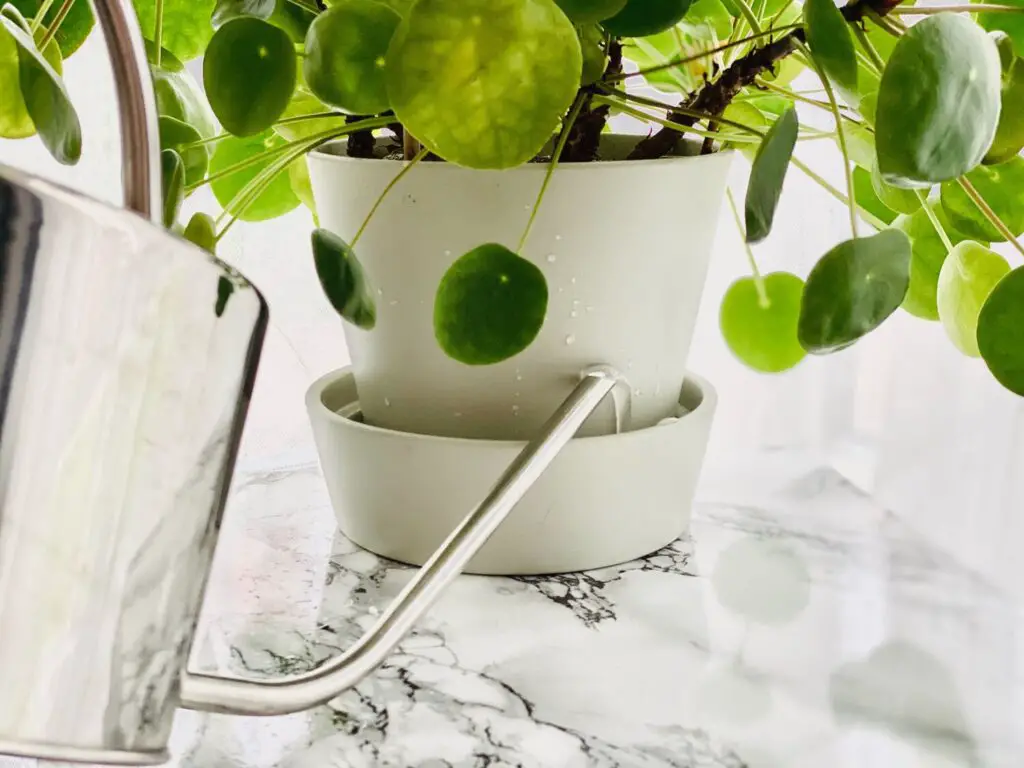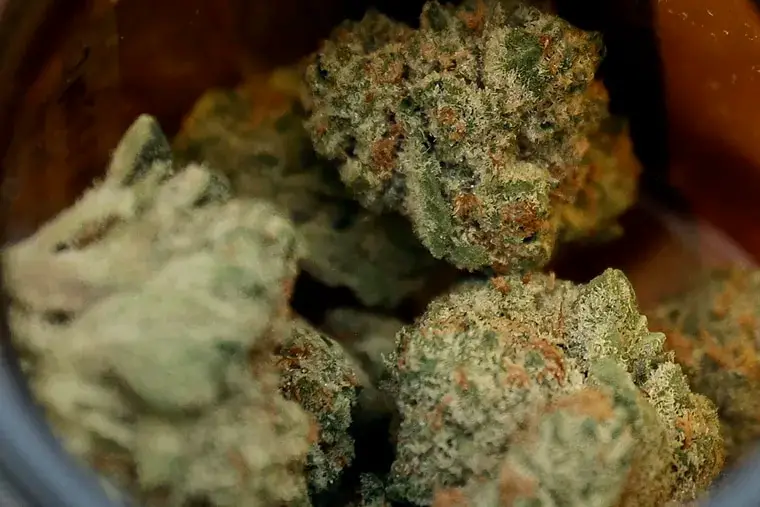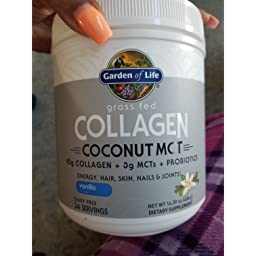To water a money plant, you should wait until the top layer of soil is dry, and then water it thoroughly until water drains out of the bottom of the pot. Money plants, also known as devil’s ivy or pothos, are popular houseplants that are known for their draped, vine-like foliage and low maintenance care requirements.
However, proper watering is crucial to keep these plants healthy and vibrant. Overwatering can lead to root rot, while underwatering can cause the leaves to wilt and droop. In this article, we will discuss the best way to water a money plant, including how often to water, how much to water, and how to check if your plant needs water.
By following these tips, you can help your money plant thrive and add a touch of green to your home or office.

Credit: savvygardening.com
Understanding The Basics Of Money Plant Care
Money plants, also known as devil’s ivy, are one of the most common indoor plants found in homes and offices worldwide. As a low-maintenance plant, they’re easy to care for and grow effortlessly. But, if you’re new to the world of greenery, understanding the basics of money plant care becomes essential.
This blog discusses the three essential aspects of money plant care: proper watering, adequate light, and temperature conditions.
Importance Of Proper Watering
Watering a money plant may seem like a simple task; however, overwatering or underwatering can harm the plant’s growth. Here are some essential facts about proper watering for effectively caring for your money plant:
- A general rule of thumb is to allow the soil to dry out slightly between watering. Water your plant once a week or when the soil is dry approximately 1 inch below the surface.
- Overwatering leads to root rot, which makes the leaves droop. On the other hand, underwatering can cause the leaves to turn brown and wilt.
- Always use room-temperature water to avoid shocking the roots.
- Use well-draining soil and ensure that the pot’s drainage holes aren’t clogged.
- Avoid misting and keep the leaves dry to prevent fungal infections.
Light And Temperature Requirements
Money plants thrive in indirect, bright light, which means they require moderate to low light conditions to grow. Keeping the plant under direct sunlight can scorch the leaves, while low light conditions can halt growth. Here’s what you should know about light and temperature requirements:
- Money plants prefer warmer temperatures between 60-85°f and humidity between 40-50%.
- Avoid exposing your plant to temperatures below 50°f or above 95°f, which can be detrimental to its growth.
- Rotate your money plant regularly to ensure every part of the plant receives equal light exposure.
Understanding the basics of money plant care is crucial for maintaining healthy growth. This includes proper watering, adequate light, and temperature conditions. Follow the tips mentioned above and watch your money plant thrive with minimal effort on your part.
Factors To Consider When Watering Money Plant
Money plants are a popular indoor ornamental plant that adds a touch of greenery and beauty to any living space. They are easy to grow and maintain, requiring minimal care. However, when it comes to watering, there are a few factors to consider to ensure that your money plant thrives.
In this blog post, we will explore the best way to water money plant, focusing on the subheading factors to consider when watering money plant.
Watering Frequency And Amount
The watering frequency and amount of your money plant depend on several factors, such as the plant’s size, the pot’s size, and the environment. Here are a few key points to consider:
- Watering frequency: Money plants prefer well-draining soil; therefore, you should water when the topsoil becomes slightly dry to the touch. Typically, watering every 7-10 days is sufficient.
- Watering amount: Overwatering can lead to root rot, while underwatering can cause the plant to wilt. Aim to provide enough water to saturate the soil without leaving standing water in the pot’s saucer.
Ideal Soil Moisture Levels
Soil moisture plays a critical role in the overall health of your money plant. Here are a few points to keep in mind:
- Well-draining soil: Money plants require well-draining soil to prevent waterlogging, which can cause root rot. Ensure that the pot has drainage holes and use a soil mix that allows excess water to drain away from the roots.
- Consistent moisture: Maintain consistent moisture levels by watering the plant when the topsoil becomes slightly dry to the touch. Avoid allowing the soil to dry out completely and ensure that the plant does not sit in standing water.
Water Quality And Temperature
Water quality and temperature can also affect the health of your money plant. Here are a few things to consider:
- Water quality: Use clean, distilled or filtered water to avoid chlorine and minerals buildup, which can hinder the plant’s growth and cause leaf tips to turn brown.
- Water temperature: Room temperature water is best for money plants. Avoid overly cold or hot water, which can shock the roots and cause damage.
Proper watering is essential for the success of your money plant. By considering these factors, you can ensure that your plant receives the right amount of water and moisture levels to thrive. Happy watering!
Tips For Watering Money Plant To Ensure Optimal Growth
Watering Techniques
Watering money plants can be tricky, but it is essential to ensure optimal growth. The following watering techniques will help you keep your money plant healthy:
- Make sure to water only when the topsoil is dry to touch. Overwatering can lead to root rot and stunted growth.
- When watering, pour water around the plant’s base and not on leathery leaves or stems.
- Do not let the plant sit in standing water, as it can suffocate the roots and cause damage.
- Place the plant in a well-draining pot with a drainage hole to prevent water from accumulating in the pot.
Avoiding Common Mistakes
Avoiding common mistakes while watering can help save your plant from undue stress. Here are some common mistakes to steer clear of:
- Do not water the plant too frequently, as it can cause soggy soil and lead to root rot.
- Always water the plant in moderation; too little water can cause wilting and yellowing of leaves.
- Do not allow the plant to become completely dry. This can cause the leaves to wilt and eventually die.
- Avoid using chlorinated water, as it can cause leaf tip burn.
How To Deal With Under-Watering And Over-Watering
Under-watering and over-watering are common issues when it comes to money plant care. Here’s how to deal with them:
- If you’ve under-watered your plant, water it thoroughly and allow it to drain, then reduce watering to once a week.
- If the leaves are yellowing and falling off, it’s a sign of overwatering. Allow the plant to dry out before watering it again. Repot the plant in a well-draining pot to prevent overwatering in the future.
Following these simple tips for watering your money plant will ensure it stays healthy and vibrant. Remember to monitor your plant’s growth and adjust your watering schedule accordingly. Happy gardening!
Signs To Look For When Watering Money Plant
Money plants are popular houseplants that are easy to care for and can thrive in various indoor conditions. However, to keep them healthy, it is essential to understand the signs that indicate whether they are getting enough water or not.
Here are some signs to look for when watering a money plant:
Symptoms Of Over-Watering
Overwatering can cause root damage and make money plants more susceptible to fungal growth. Here are some signs that indicate whether a money plant is being over-watered:
- Yellowing leaves
- Wilting or drooping leaves
- Soft, mushy stems
- Leaves with brown spots
Signs Of Under-Watering
Not providing enough water to a money plant can cause it to wilt and ultimately die. Here are some signs that indicate whether a money plant is being under-watered:
- Dry soil
- Brown tips on leaves
- Soil pulling away from the edges of the pot
- Slow growth
Identifying Root Rot
One of the most significant problems caused by over-watering is root rot, which can be challenging to detect until it has done significant damage. Here are some signs that indicate whether a money plant is suffering from root rot:
- Yellowing leaves that fall off easily
- Musty odor
- Brown, mushy roots that look slimy
Remember to always check the soil’s moisture level before watering your money plant, and adjust watering frequency accordingly. With proper care, your money plant will continue to thrive and add beauty to your home or office.
Troubleshooting Common Watering Problems With Money Plant
Best way to water money plant: troubleshooting common watering problems with money plant
Money plant, also known as devil’s ivy, is a popular indoor plant commonly grown for its beautiful leaves and air purifying properties. One of the most crucial aspects of money plant care is watering. Watering the plant correctly can help it thrive, but many common watering problems can lead to yellowing, pests, diseases, or even fungal growth.
In this section, we will discuss some of the most effective ways to troubleshoot common watering issues with money plants.
Removing Yellow Leaves
Money plant leaves can turn yellow due to a variety of reasons such as improper watering, overwatering or underwatering, poor drainage, pests or diseases. Removing yellow leaves can help your plant regain its vigor. Here are some tips for removing yellow leaves from your money plant:
- Gently pinch the yellow leaves with your fingers and pull them off from the stem. Make sure to remove only the yellow or brown leaves and leave the green ones.
- Cut off the yellow leaves using sanitized pruning scissors. Ensure that you make a clean cut close to the stem, without damaging the healthy leaves or stem.
- Dispose of the yellow leaves properly and ensure that you wash your hands or sanitize your tools to prevent the spread of pests or diseases.
Dealing With Pests And Diseases
Money plants can be susceptible to pests such as mites, scale insects, mealybugs, or diseases such as fungal rots, leaf spots, or blights. These can cause yellowing, spotting, wilting, or stunting of the plant growth. Here are some ways to deal with pests and diseases:
- Identify the type of pest or disease affecting your plant and treat it accordingly. You can use natural remedies such as neem oil, insecticidal soap, or baking soda solutions for pests or fungicides or copper sprays for diseases.
- Quarantine the affected plant and isolate it from healthy plants to prevent the spread of pests or diseases.
- Remove and dispose of severely affected leaves or stems to prevent further infestations or infections.
Preventing Fungal Growth
Fungal growth is a common problem in money plants due to overwatering, poor drainage, high humidity, or low air circulation. Fungal growth can appear as white powdery spots, brown or black spots, or slimy patches on the leaves or stem.
Here are some tips to prevent fungal growth:
- Water the money plant only when the topsoil feels dry to the touch. Avoid watering too frequently or letting the plant sit in water.
- Ensure that the money plant has proper drainage and that the soil is well-draining to prevent waterlogging or root rot.
- Provide adequate air circulation and ventilation to the plant by placing it near a fan or opening a window. This can help reduce humidity levels and prevent fungal growth.
Watering your money plant correctly can make all the difference in its growth and health. By following the tips provided in this section, you can troubleshoot common watering problems with your money plant and ensure that it thrives for years to come.
Final Thoughts On Watering Money Plant
Money plants, also known as pothos, are one of the most popular indoor plants. They are low-maintenance and easy to grow, making them perfect for all levels of plant enthusiasts. However, they do require consistent and proper watering. We will dive into the best way to water your money plant, the importance of consistent watering, and what you should do next on your money plant care journey.
Recap Of Key Takeaways
- Money plants require consistent watering, but overwatering can be harmful.
- The top layer of soil should be dry to the touch before watering again.
- Using room temperature water is ideal.
- Watering frequency varies based on humidity and temperature.
Importance Of Consistent Watering
Consistent watering is crucial for the health of your money plant. Overwatering can lead to root rot, which can be fatal for the plant. Underwatering, on the other hand, can cause the leaves to turn yellow and drop off. To ensure your plant receives proper hydration, follow these steps:
- Wait until the top layer of soil is dry to the touch before watering again.
- Use a watering can with a narrow spout to avoid getting water on the leaves, which can cause fungal growth.
- Room temperature water is best for your plant.
- Watering frequency varies based on humidity and temperature. In general, once a week is sufficient, but you may need to adjust accordingly.
Next Steps For Your Money Plant Care Journey
Now that you know how to water your money plant properly, there are a few next steps you should take to ensure its continued health:
- Repot your plant every one to two years to ensure it has enough room to grow.
- Fertilize your plant once a month during the spring and summer with a balanced fertilizer.
- Prune your plant to maintain its shape and promote new growth.
- Monitor your plant for any signs of pests or disease and address them promptly.
Watering your money plant correctly is crucial for its health and growth. Remember to wait until the top layer of soil is dry before watering, use room temperature water, and adjust watering frequency based on humidity and temperature. With consistent care and attention, your money plant will continue to thrive.
Frequently Asked Questions For Best Way To Water Money Plant
How Often Should I Water My Money Plant?
Water your money plant once a week during the growing season. In winter, water it once in two weeks. Overwatering can lead to root rot, so it’s better to ensure the soil is dry to the touch before watering.
Can I Water Money Plant With Tap Water?
Yes, it’s fine to use tap water. Allow the tap water to sit in an open container for at least 24 hours to remove any chlorine. Alternatively, you can use filtered water or rainwater to keep your plant healthy.
Is It Okay To Mist My Money Plant?
Misting your money plant can help to increase humidity levels and reduce dust. Mist it once a day with lukewarm water in the morning. Be careful not to over mist. Over misting can cause the plant leaves to turn yellow.
How Can I Tell If My Money Plant Is Overwatered?
Overwatering can result in yellowing leaves, wilting, and root rot. Check the soil before watering to avoid overwatering. Over-watered money plant leaves are yellow, while under-watered money plant leaves are brown or crispy.
Will My Money Plant Do Well In Direct Sunlight?
Money plant grows best in bright indirect light only. Harsh direct sunlight can scorch its leaves. East or west-facing windows can be ideal for money plant. In low light conditions, the leaves may turn yellow or lose their variegation.
Conclusion
Keeping your money plant healthy and thriving can be a rewarding experience. With proper care and a little knowledge on watering techniques, you too can have a lush and green money plant that fills your space with life. By following the tips mentioned in this article, you are well on your way to providing the ideal conditions for your money plant’s growth.
Remember, consistency is key when it comes to watering- overwatering or underwatering may harm the root system, ultimately leading to the plant’s demise. The best way to learn how to water a money plant is through attentive observation and care, ensuring that you stay on track with its needs.
A happy money plant is a beautiful addition to any home or workspace, and by following these simple steps, you can ensure that your plant remains happy and healthy for years to come.




